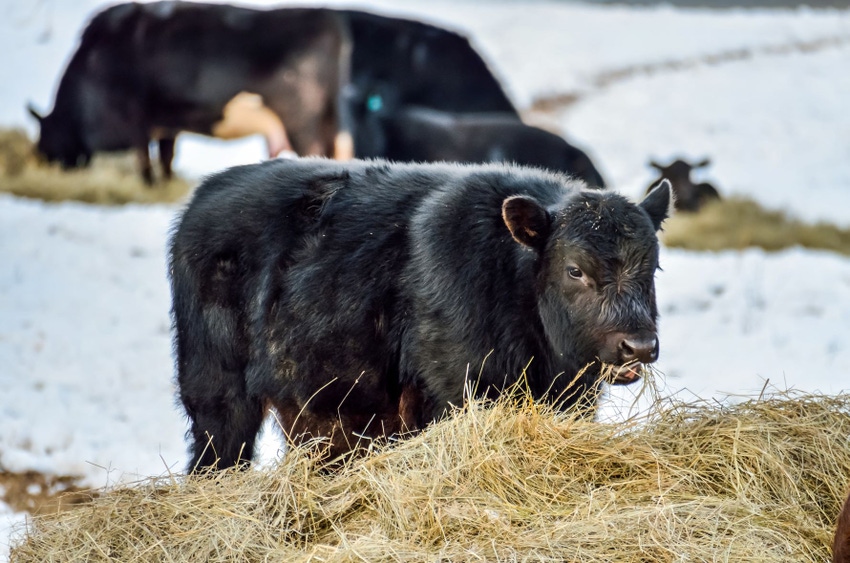Tips for reducing hay waste, feeding costs
Several advantages to unrolling hay across a large area instead of feeding at the bunk or ring; "boss" cows and timid cows have equal access.
December 14, 2022

Livestock producers have options for reducing hay waste and feeding costs while improving animal behavior and performance, says University of Missouri Extension specialist Charlie Ellis.
Farmers can choose from several methods to reduce waste based on their preferences, labor availability and climate, says Ellis.
Here are four basics from Ellis:
Right size, right place. Choose the right size and type of feeder. Match the feeder size to the herd size. Place feed on a pad or elevated surface and in a well-drained area.
Boot out the bullies. Cull aggressive animals that push out other animals and prevent them from getting their fair share.
Don't let food go to waste. Make animals clean up most of the hay before making more available.
Feed hay stored outside first. This reduces spoilage and improves palatability.
Ellis calls unrolling hay the "bed-and-breakfast" of the hay world. There are several advantages to unrolling hay across a large area instead of feeding at the bunk or ring, says Ellis. "Boss" cows and timid cows have equal access. This method also reduces hoof damage and compaction in the feeding area, can help overseed pastures with legumes and distributes nutrients back onto the ground.
Another option is to process bales. This encourages cows to eat low- to medium-quality forages. Processing allows mixing and dilution of forages of differing qualities, including high-nitrate forages.
However, bale processors have some drawbacks, says Ellis. Processors chop forages into smaller particles that dissolve easier in the rumen. This can leave cows feeling hungry and result in cows eating more food, which can mean higher feed costs. Also, processors cost $20,000-$25,000.
Different styles of bale feeders are more efficient than others. Feeder and stocking rates determine if cone or open feeders are right for each operation.
Ellis says cone feeders are the most efficient. Sheeted rings waste less than open rings, the most wasteful of feeder designs. Producers also can restrict time of access with feeders to improve body score counts, increase milk production and reduce hay waste. Finding the right feeder design improves feeder payback, Ellis says.
When limiting time for feeding, allow at least 30 inches of bunk space per cow when bunk feeding and provide one bale per 10 cows when ring feeding, he says. Divide cows into groups based on age and "pecking order." He also recommends feeding at the same time each day.
Free access encourages waste, Ellis says. Studies show that feeding daily instead reduces food costs and waste. Feed more often and waste less.
Choice of feeding ring also matters. There is less waste when feeding square bales in open rings rather than large bales in an open ring. Large round, unrolled bales fed in rings have 45% waste and are the least efficient, according to research done in 1973 at MU.
Considerations when buying hay:
Test the hay to make sure it meets the nutritional needs of your herd.
Know the hay's age, how it was stored and how it was wrapped.
Buy hay by the ton.
Source: University of Missouri Extension, which is solely responsible for the information provided, and wholly owns the information. Informa Business Media and all its subsidiaries are not responsible for any of the content contained in this information asset.
You May Also Like


.png?width=300&auto=webp&quality=80&disable=upscale)
